Abstract
Reported are the results of a case-control study carried out between July 1989 and June 1990 in Fortaleza city, Ceará State, Brazil, to determine the factors that place young children living in urban slum conditions at increased risk of contracting pneumonia. Cases were 650 under-2-year-olds with a radiological diagnosis of pneumonia who were recruited at the main paediatric hospital in the city over a full calendar year. Age-matched controls were recruited from the neighbourhood where the cases lived. Cases and controls were compared with respect to a variety of sociodemographic, environmental, reproductive, nutritional, and morbidity factors, and a risk factor questionnaire was administered to the mother of each child or to the child's normal guardian. Cases and controls were also weighed and measured. Malnutrition was the most important risk factor for childhood pneumonia in the study population, with weight-for-age, height-for-age, and weight-for-height also being important risk factors. In view of the high prevalence of stunting in the study population, there is an urgent need to reduce the level of malnutrition as a priority. Attendance at a day care centre was also associated with a high odds ratio. In view of the growing numbers of children attending day care centres in both developing and developed countries, it is essential that ways be identified to improve the design and management of such centres in order to minimize the risk of pneumonia. Increased risks of childhood pneumonia were also associated with low birth weight, non-breast-feeding, crowding, high parity, and incomplete vaccination status, but not with socioeconomic status or environmental variables. Finally, children who had suffered from previous episodes of wheezing or been hospitalized for pneumonia had a greater than threefold increased risk of contracting the disease.
Full text
PDF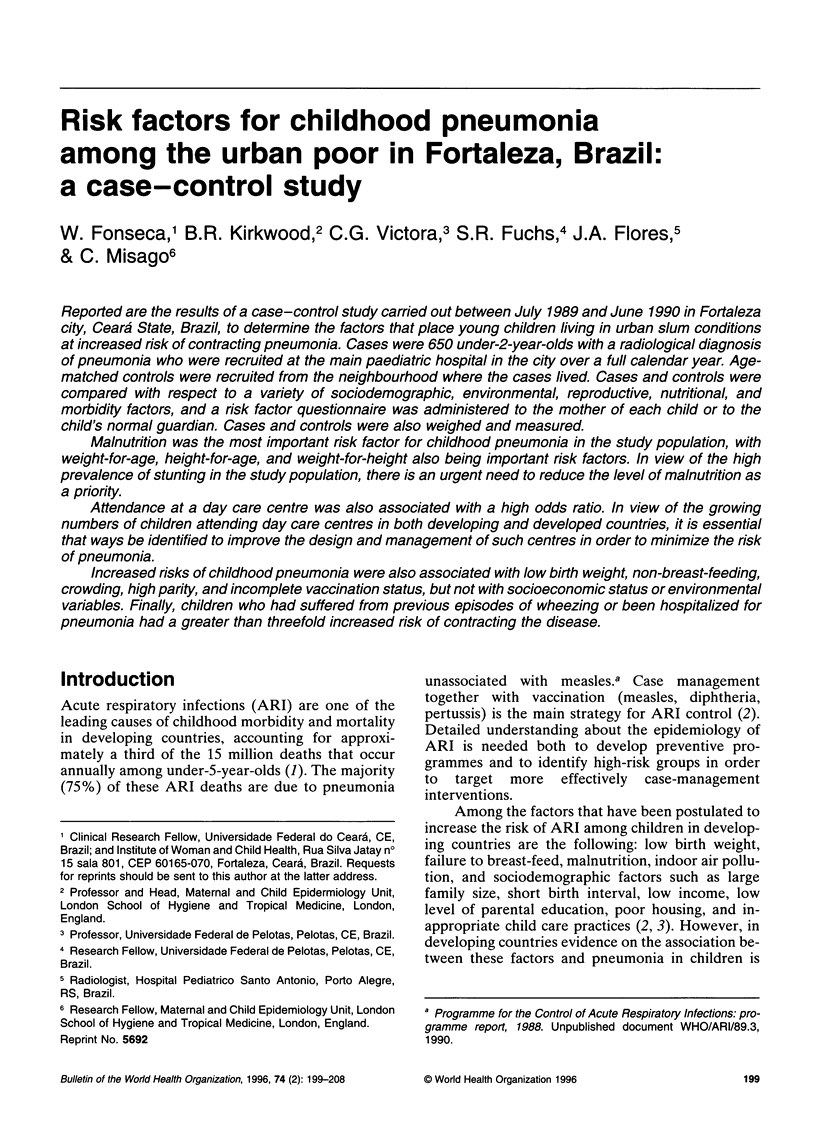
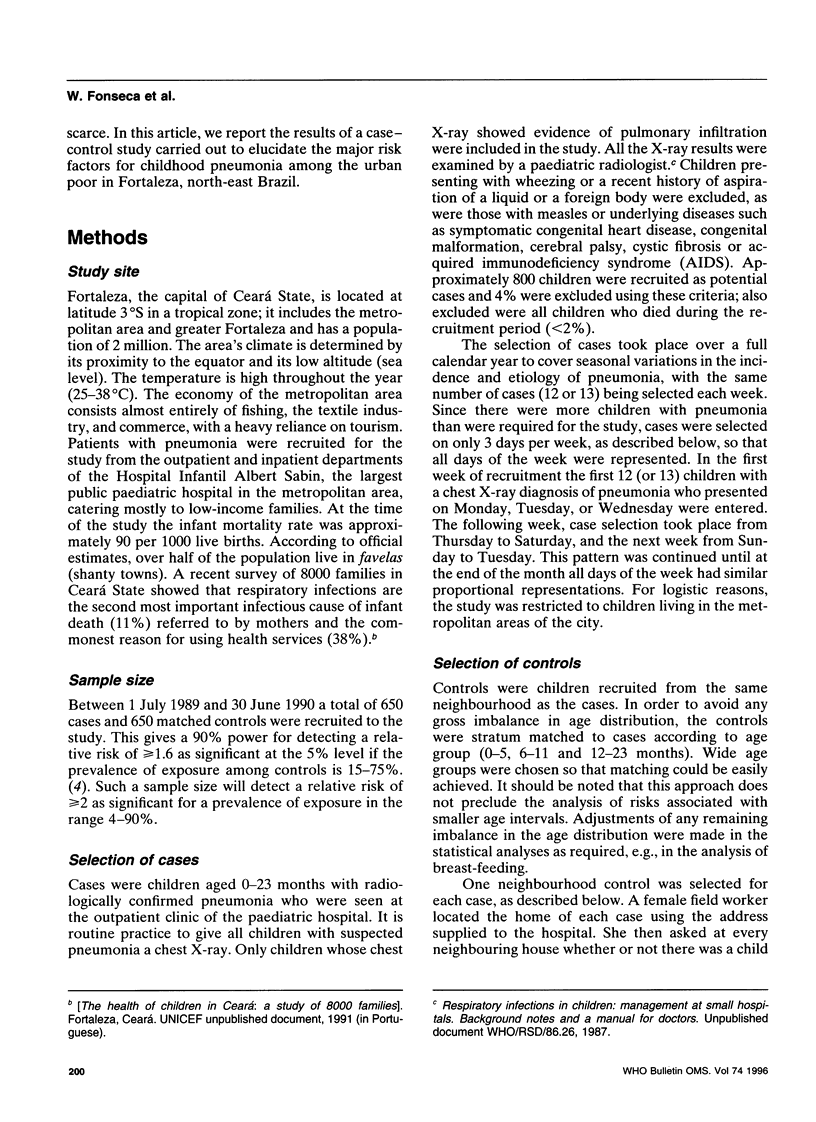
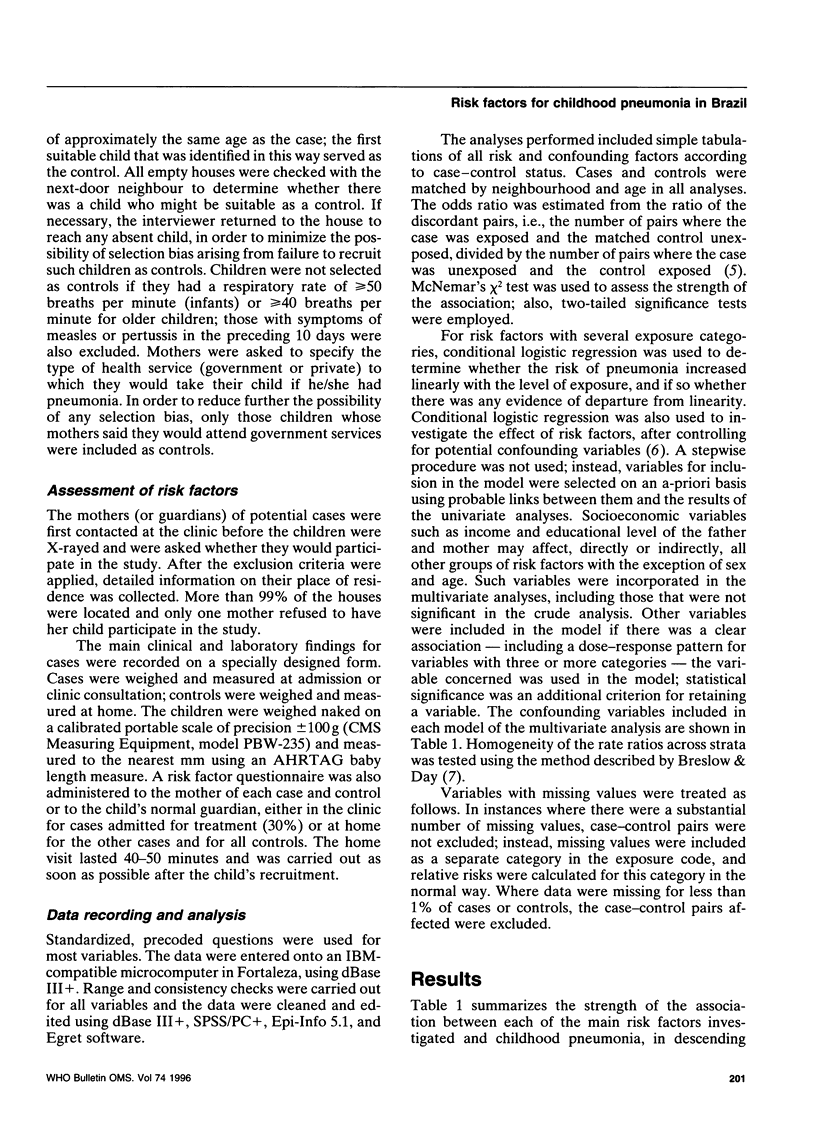
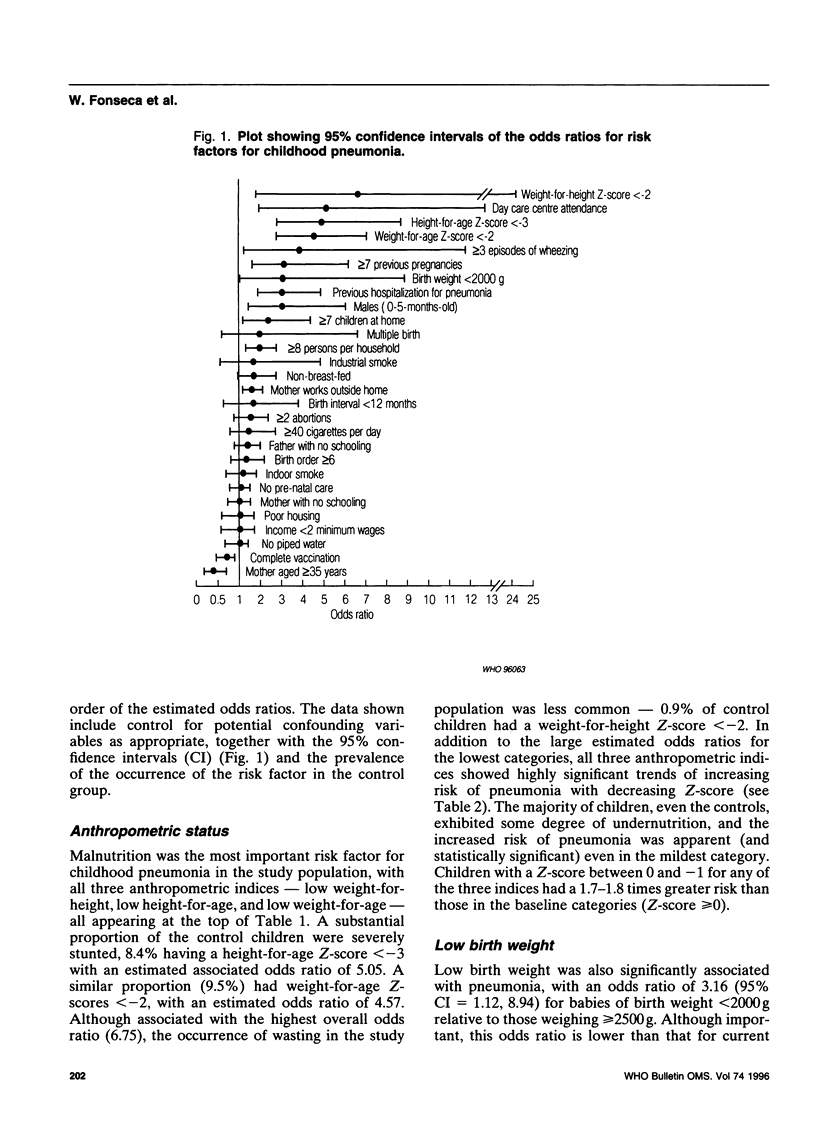
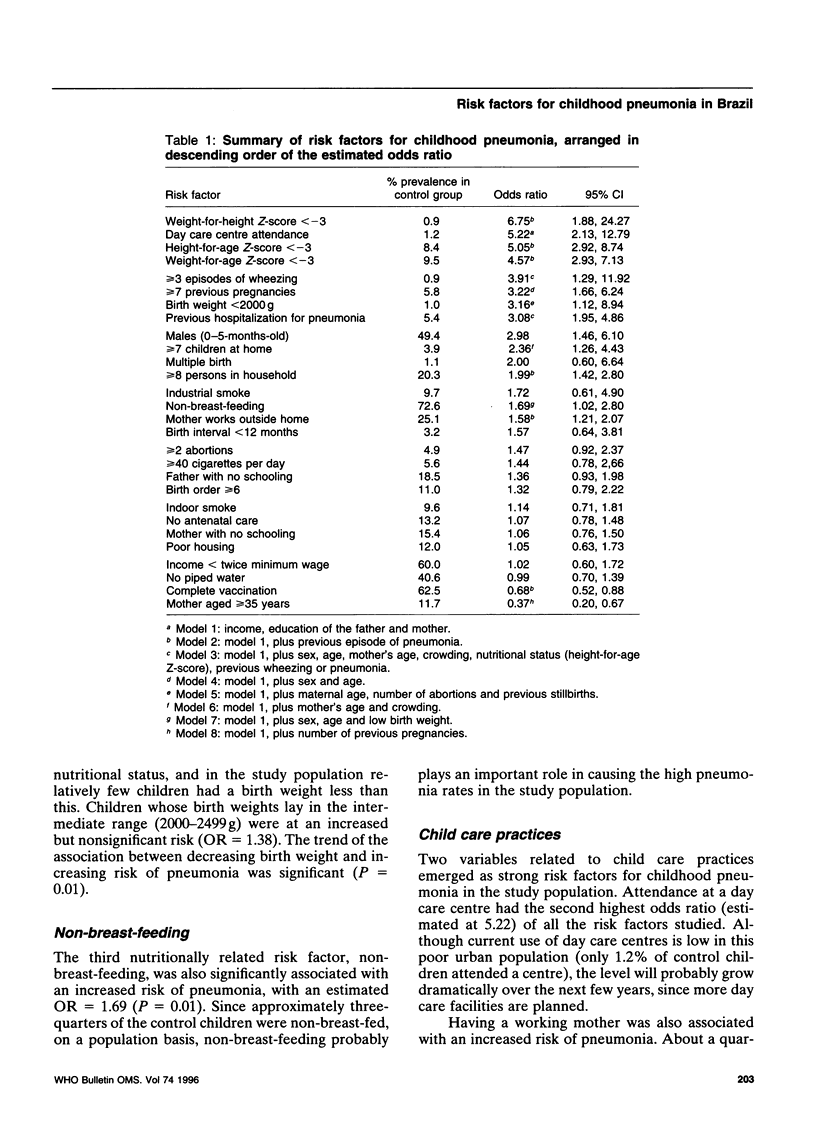
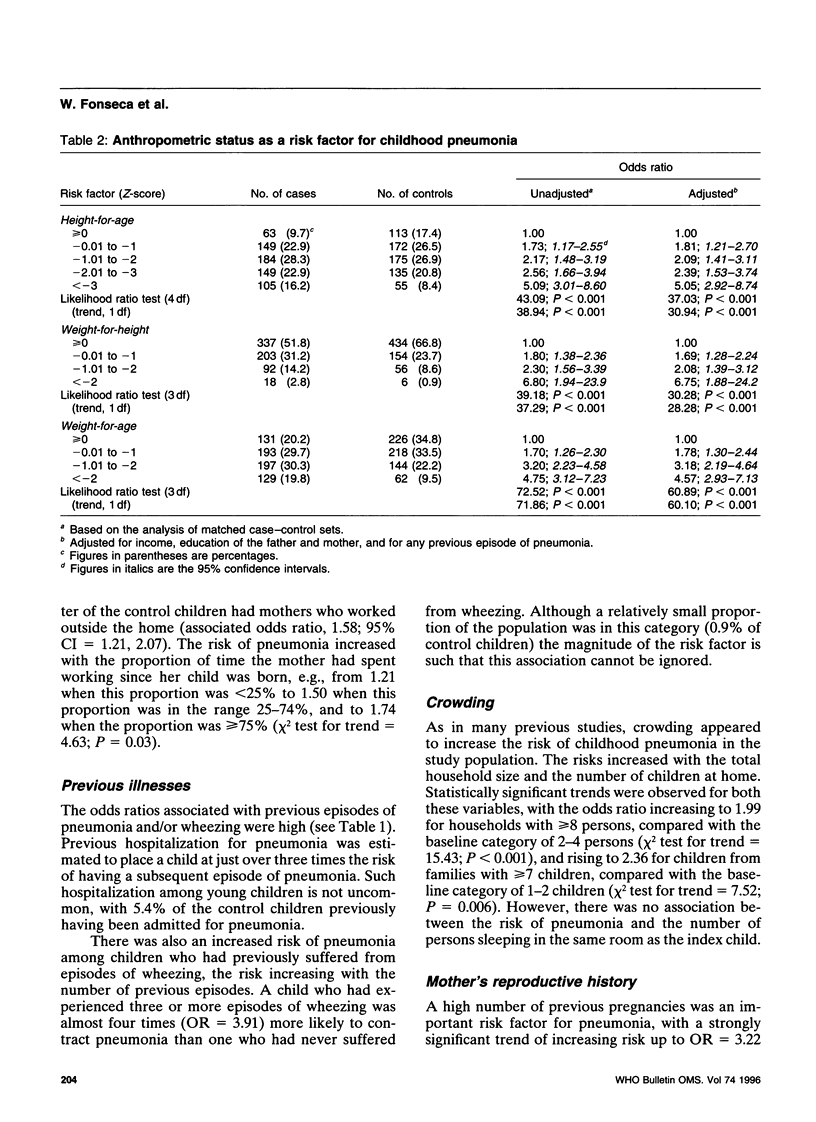
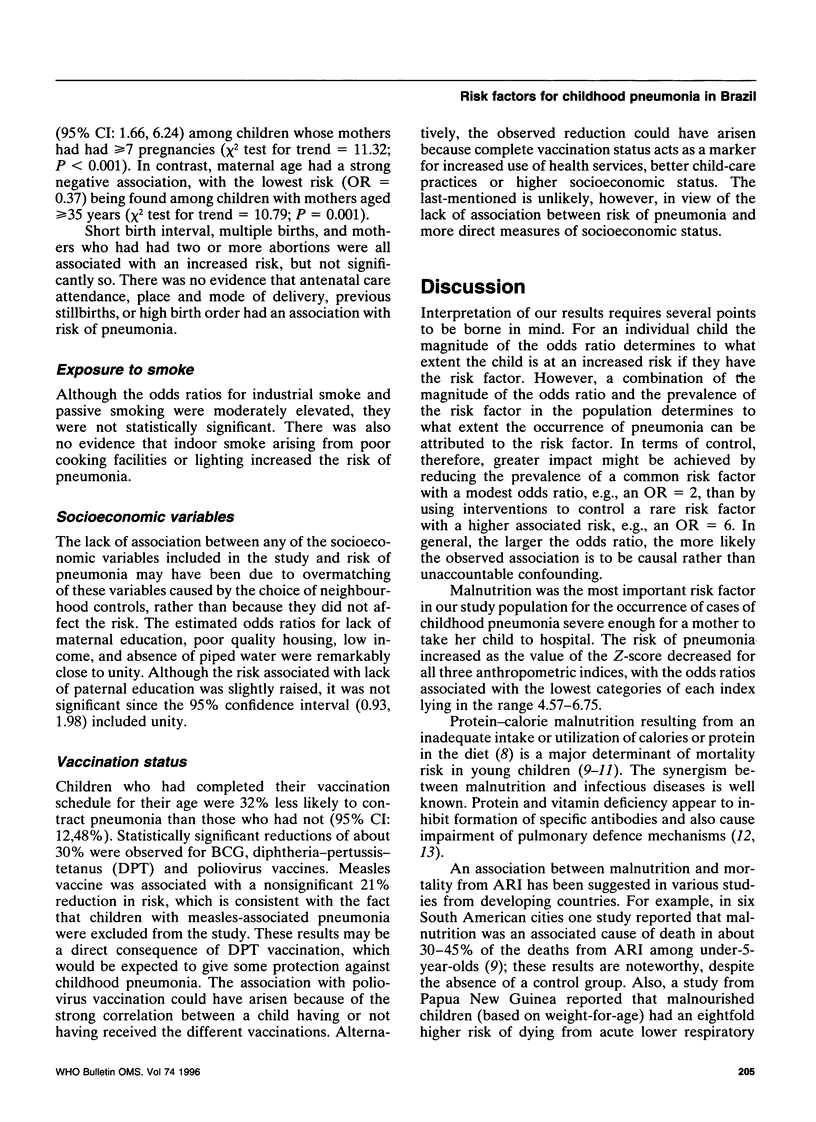
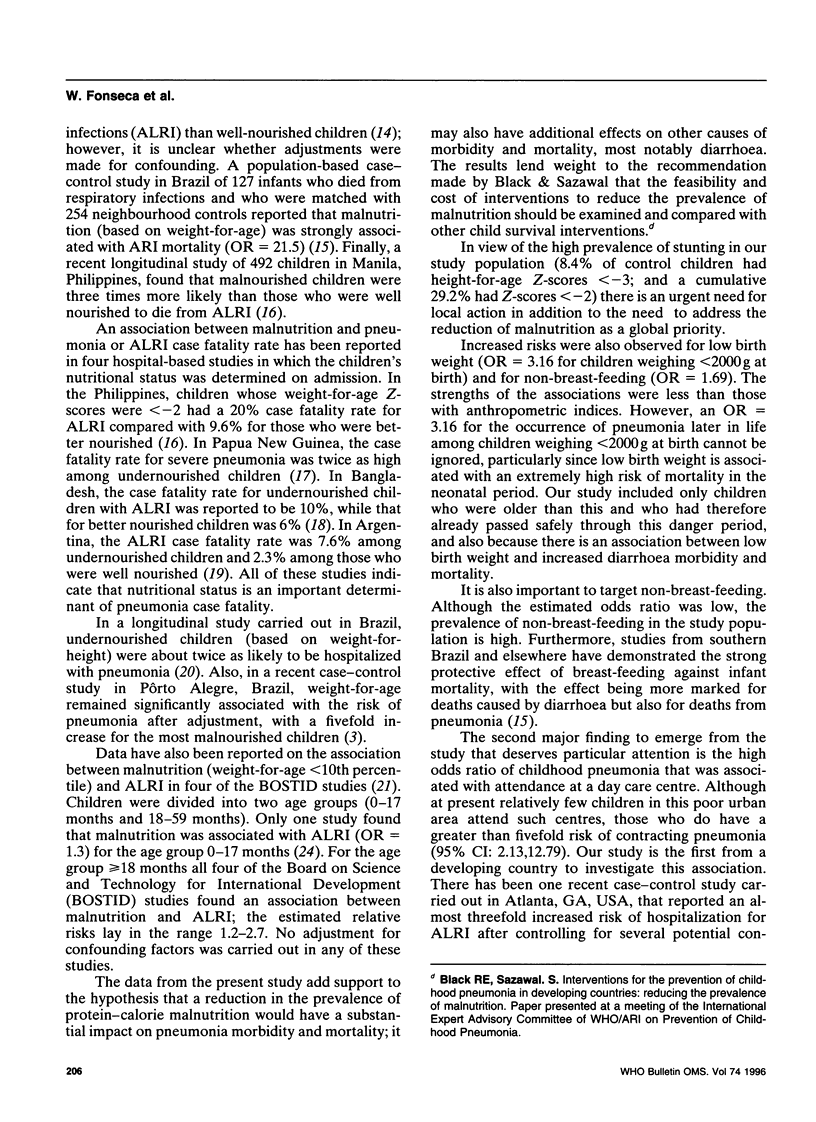
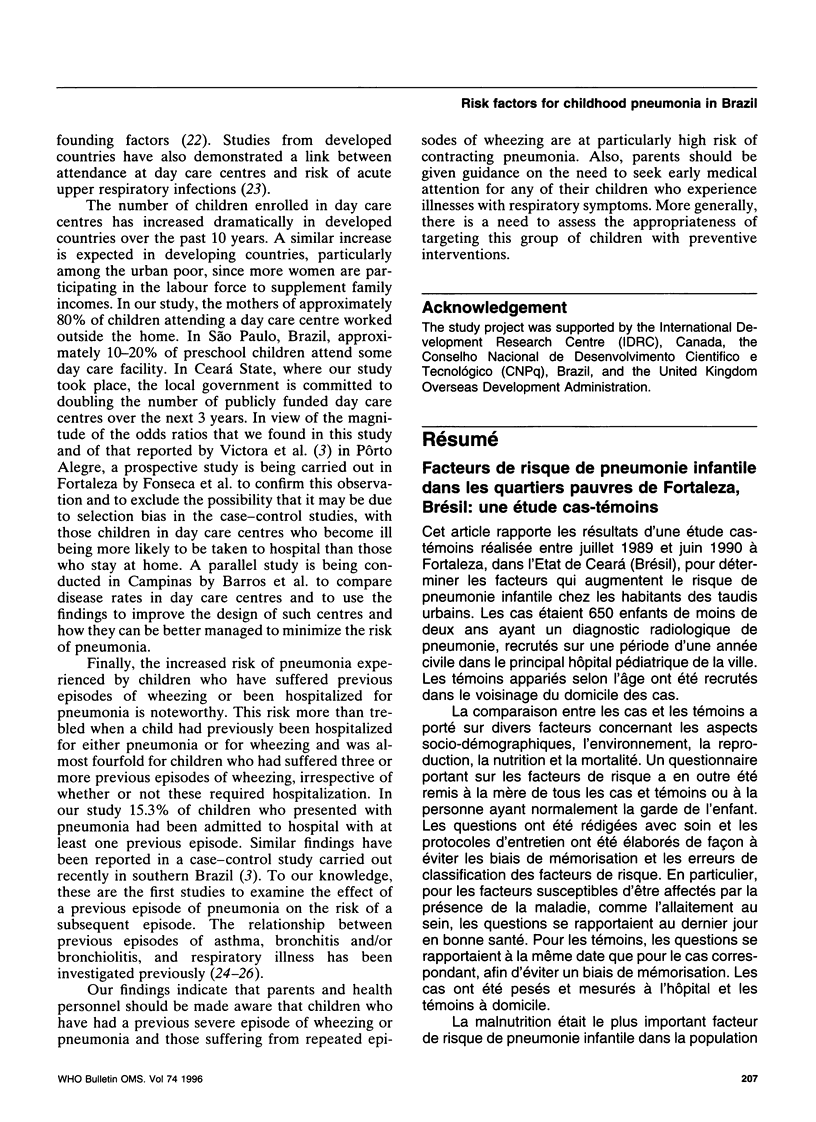
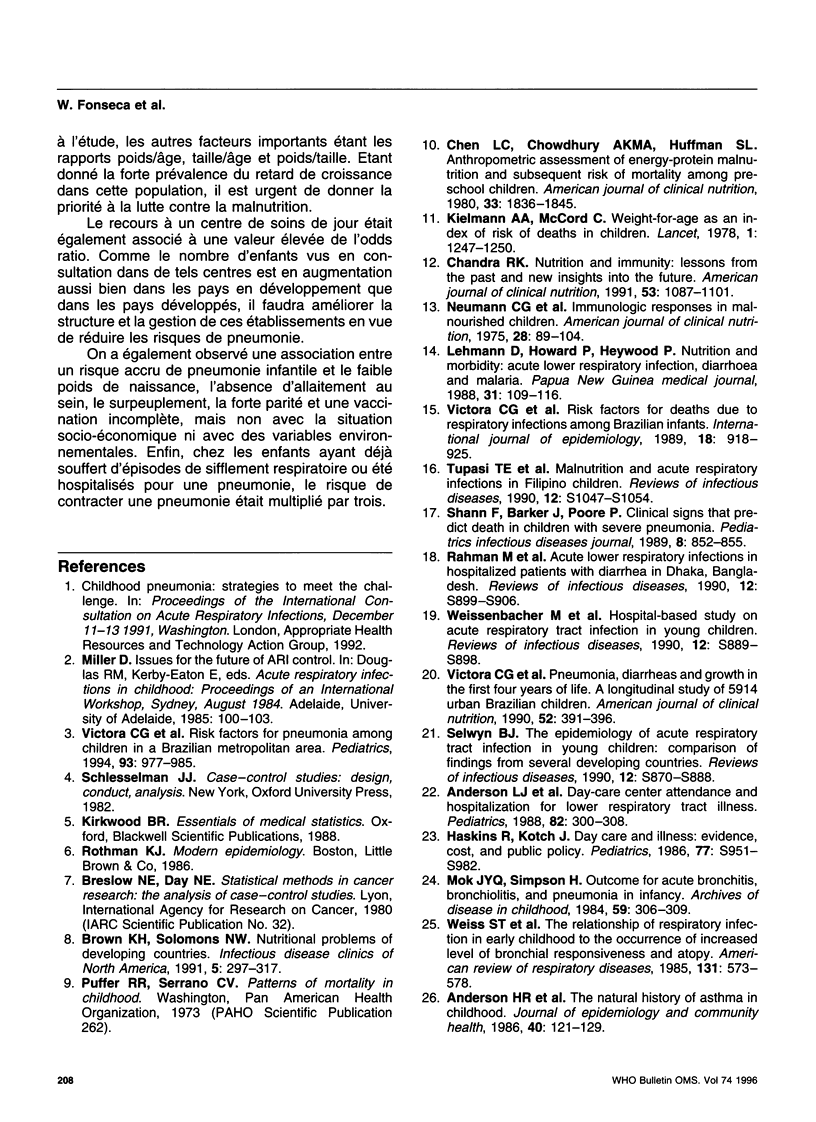
Selected References
These references are in PubMed. This may not be the complete list of references from this article.
- Anderson H. R., Bland J. M., Patel S., Peckham C. The natural history of asthma in childhood. J Epidemiol Community Health. 1986 Jun;40(2):121–129. doi: 10.1136/jech.40.2.121. [DOI] [PMC free article] [PubMed] [Google Scholar]
- Anderson L. J., Parker R. A., Strikas R. A., Farrar J. A., Gangarosa E. J., Keyserling H. L., Sikes R. K. Day-care center attendance and hospitalization for lower respiratory tract illness. Pediatrics. 1988 Sep;82(3):300–308. [PubMed] [Google Scholar]
- Brown K. H., Solomons N. W. Nutritional problems of developing countries. Infect Dis Clin North Am. 1991 Jun;5(2):297–317. [PubMed] [Google Scholar]
- Chandra R. K. 1990 McCollum Award lecture. Nutrition and immunity: lessons from the past and new insights into the future. Am J Clin Nutr. 1991 May;53(5):1087–1101. doi: 10.1093/ajcn/53.5.1087. [DOI] [PubMed] [Google Scholar]
- Chen L. C., Chowdhury A., Huffman S. L. Anthropometric assessment of energy-protein malnutrition and subsequent risk of mortality among preschool aged children. Am J Clin Nutr. 1980 Aug;33(8):1836–1845. doi: 10.1093/ajcn/33.8.1836. [DOI] [PubMed] [Google Scholar]
- Kielmann A. A., McCord C. Weight-for-age as an index of risk of death in children. Lancet. 1978 Jun 10;1(8076):1247–1250. doi: 10.1016/s0140-6736(78)92478-9. [DOI] [PubMed] [Google Scholar]
- Lehmann D., Howard P., Heywood P. Nutrition and morbidity: acute lower respiratory tract infections, diarrhoea and malaria. P N G Med J. 1988 Jun;31(2):109–116. [PubMed] [Google Scholar]
- Mok J. Y., Simpson H. Outcome for acute bronchitis, bronchiolitis, and pneumonia in infancy. Arch Dis Child. 1984 Apr;59(4):306–309. doi: 10.1136/adc.59.4.306. [DOI] [PMC free article] [PubMed] [Google Scholar]
- Rahman M., Huq F., Sack D. A., Butler T., Azad A. K., Alam A., Nahar N., Islam M. Acute lower respiratory tract infections in hospitalized patients with diarrhea in Dhaka, Bangladesh. Rev Infect Dis. 1990 Nov-Dec;12 (Suppl 8):S899–S906. doi: 10.1093/clinids/12.supplement_8.s899. [DOI] [PubMed] [Google Scholar]
- Selwyn B. J. The epidemiology of acute respiratory tract infection in young children: comparison of findings from several developing countries. Coordinated Data Group of BOSTID Researchers. Rev Infect Dis. 1990 Nov-Dec;12 (Suppl 8):S870–S888. doi: 10.1093/clinids/12.supplement_s870. [DOI] [PubMed] [Google Scholar]
- Shann F., Barker J., Poore P. Clinical signs that predict death in children with severe pneumonia. Pediatr Infect Dis J. 1989 Dec;8(12):852–855. doi: 10.1097/00006454-198912000-00005. [DOI] [PubMed] [Google Scholar]
- Tupasi T. E., Mangubat N. V., Sunico M. E., Magdangal D. M., Navarro E. E., Leonor Z. A., Lupisan S., Medalla F., Lucero M. G. Malnutrition and acute respiratory tract infections in Filipino children. Rev Infect Dis. 1990 Nov-Dec;12 (Suppl 8):S1047–S1054. doi: 10.1093/clinids/12.supplement_8.s1047. [DOI] [PubMed] [Google Scholar]
- Victora C. G., Barros F. C., Kirkwood B. R., Vaughan J. P. Pneumonia, diarrhea, and growth in the first 4 y of life: a longitudinal study of 5914 urban Brazilian children. Am J Clin Nutr. 1990 Aug;52(2):391–396. doi: 10.1093/ajcn/52.2.391. [DOI] [PubMed] [Google Scholar]
- Victora C. G., Fuchs S. C., Flores J. A., Fonseca W., Kirkwood B. Risk factors for pneumonia among children in a Brazilian metropolitan area. Pediatrics. 1994 Jun;93(6 Pt 1):977–985. [PubMed] [Google Scholar]
- Victora C. G., Smith P. G., Barros F. C., Vaughan J. P., Fuchs S. C. Risk factors for deaths due to respiratory infections among Brazilian infants. Int J Epidemiol. 1989 Dec;18(4):918–925. doi: 10.1093/ije/18.4.918. [DOI] [PubMed] [Google Scholar]
- Weiss S. T., Tager I. B., Muñoz A., Speizer F. E. The relationship of respiratory infections in early childhood to the occurrence of increased levels of bronchial responsiveness and atopy. Am Rev Respir Dis. 1985 Apr;131(4):573–578. doi: 10.1164/arrd.1985.131.4.573. [DOI] [PubMed] [Google Scholar]


